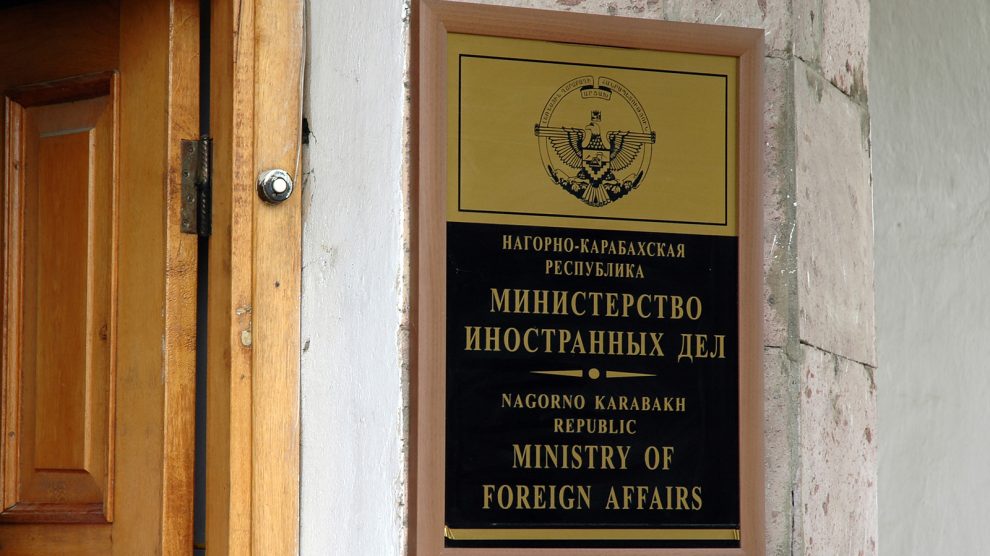Nine months after the start of Baku’s blockade of the Lachin Corridor, there is a new government in Karabakh and Azerbaijan has allowed humanitarian supplies to be delivered to the breakaway region. But as tensions between Azerbaijan and Armenia continue to mount, peace is anything but certain.
On September 9, Azerbaijan said it had agreed to reopen the Lachin Corridor—the only highway linking Armenia to the breakaway region of Nagorno-Karabakh, internationally recognised as part of Azerbaijan but home to an ethnic Armenian majority—if Karabakh authorities in Stepanakert agreed to also accept aid from a road from Aghdam in Azerbaijan.
Azerbaijan has blockaded the Lachin Corridor since December 2022, creating a humanitarian crisis in Karabakh. Since July, Baku has advocated the delivery of aid via the road from Aghdam instead of the Lachin Corridor. However, Stepanakert (Khankendi in Azerbaijani) opposed the switch, fearing dependence on Azerbaijan for humanitarian supply lines—rather than on Armenia and the Russian peacekeepers theoretically obliged to protect the Lachin Corridor—could spell the end for their de facto autonomy.
- Let down by Moscow, Armenia looks to the West
- How reforestation can help bridge Armenia’s urban-rural divide
- Azerbaijan’s land border closures make little sense
But as supplies of necessities ran out in Karabakh, its president, Arayik Harutyunyan, and the second most senior official, State Minister Gurgen Nersisyan, announced their resignations. The new government agreed to a concession the previous government had opposed—any opening of the Aghdam road—as long as it coincided with the simultaneous reopening of the Lachin Corridor. Stepanakert authorities confirmed on September 9 that, “an agreement has been reached according to which the transportation of humanitarian goods through the Lachin corridor will be restored through Russian peacekeepers and the International Committee of the Red Cross (ICRC).”
On September 12, a Russian Red Cross truck delivered humanitarian aid including food, blankets, and hygiene and childcare products to Karabakh from Aghdam—marking the first delivery of supplies to the region in roughly three months and the first use of that road in three decades. But despite the agreement, Azerbaijan has yet to allow any of the dozens of Armenian and French trucks of aid through its checkpoint on the Lachin Corridor.
Hikmet Hajiyev, the top foreign policy advisor to Azerbaijani president Ilham Aliyev, tweeted that the Russian truck’s delivery was “a separate deal and shouldn’t be confused with the suggestion on simultaneous opening of Agdam- Khankandi and Lachin- Khankandi roads for ICRC delivery.”
He has also accused the “illegal puppet regime” in Karabakh of rejecting offers for a simultaneous reopening contingent on the acceptance of Baku “customs and border control regime” at the Lachin Corridor checkpoint and called for the dissolution and disarming of the breakaway state.
Tensions escalate
The possible alleviation of the crisis in Karabakh coincides with an escalation of tensions between Azerbaijan and Armenia to their highest levels since the two countries fought a war in 2020.
There are frequent exchanges of fire along the border between the two countries, and Azerbaijani shelling near an Armenian border town killed four Armenian soldiers on September 1. Some clashes have resulted with Azerbaijani troops taking up positions within the territory of Armenia-proper.
An investigation by Haaretz, an Israeli newspaper, found that the number of cargo flights from Israeli’s Ovda airbase—the only airfield in Israel through which explosives may be flown into and out of the country—to Azerbaijan spiked during periods of fighting against Armenia and Karabakh, including the 2020 war. There has again been an uptick in flights, with five shipments from the airfield to Azerbaijan in the last two weeks alone—two of which landed in the Azerbaijani city of Ganja, near Karabakh.
Strategic allies, in exchange for Azerbaijan facilitating access to Iran for Israeli intelligence operations, Israel has sold Baku advanced weapons systems, including ballistic missiles, air defense and electronic warfare systems, and kamikaze drones. On September 13, Azerbaijan’s armed forces conducted large scale air defense drills, including the live firing of the Israeli made Barak-8 ER air defense system.
Footage appearing to show the increased movement of Azerbaijani troops around Karabakh and the Armenian border has circulated on social media in recent weeks, further raising Armenian concerns about another war—potentially to seize territory in its south that would form a land-bridge between the Azerbaijani exclave of Nakhchivan and the rest of the country.
Nonetheless, both Armenia and Azerbaijan are officially continuing their dialogue in a tenuous peace process across competing tracks of negotiations mediated by Russia, the United States, and the European Union.
“There is a process, there is a discussion… Unfortunately I am obliged to state that there are important questions on which the two sides’ positions are still quite far from each other,” said Armenian foreign minister Ararat Mirzoyan.
Mirzoyan also said new Azerbaijani proposals had been received by Yerevan on September 12 in response to Armenia’s previous draft peace outline and that the leaders of the two countries planned to meet in October at the third European Political Community Summit in Spain.
Until then, peace will be more fragile than ever.
Unlike many news and information platforms, Emerging Europe is free to read, and always will be. There is no paywall here. We are independent, not affiliated with nor representing any political party or business organisation. We want the very best for emerging Europe, nothing more, nothing less. Your support will help us continue to spread the word about this amazing region.
You can contribute here. Thank you.







Add Comment